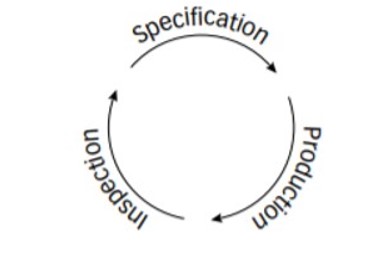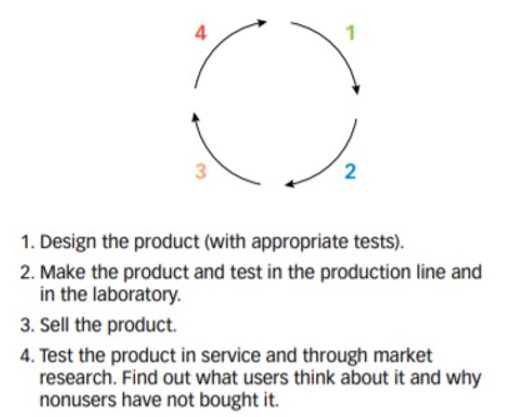Continuous Improvement (CI)
Contents |
Abstract
Continuous Improvement (CI) is a transformation philosophy that is correlated directly with certain methodologies and strategies executed that provide with constant enhancement and development of services, products, and processes [5]. It also aims at minimizing cost reduction for companies and businesses and eliminating root causes of problems. This concept often named as Continuous Improvement Process (CIP) is implemented to increase the company’s profit and competitiveness in the short term in addition to sustain these in the long one [5]. William Edwards Deming (October 14, 1900 – December 20, 1993) is generally considered the father of Continuous Improvement, however the person behind the first breakthrough correlated with CI was Walter Shewhart. He is considered one of the first pioneers of Total Quality Management (TQM) [2]. He developed the straight-line process in 1939 in terms of statistical control for specification, production and finally inspection regarding quality control (QA) for products [2]. The method was transformed to a circular model called Shewhart’s cycle the same year [2].
 The model was then modified by William Edwards to the Deming Wheel that himself presented in 1950 to an eight-day seminar in Japan sponsored by the Japanese Union of Scientists and Engineers (JUSE) [4].
The model was then modified by William Edwards to the Deming Wheel that himself presented in 1950 to an eight-day seminar in Japan sponsored by the Japanese Union of Scientists and Engineers (JUSE) [4].
 Masaaki Imai the famous inventor of Ky-zen (good-change) in English states in his book ‘’ Kaizen (Ky’zen), the Key to Japan’s Competitive Success’’ that Japanese executives reformed Demings wheel to the Plan-Design-Check-Act (PDCA) tool [3]. Deming, nonetheless, kept himself distant from the tool and after thirty years in 1980 he introduced the Plan-Do-Study-Act (PDSA) cycle [4].
While Continuous Improvement can be broad and abstract it has its roots in manufacturing, some other concepts that it can be affiliated to are quality control, operations analysis, management and mostly anything that includes processes. Finally, CI is defined as ‘any state of “being” beyond the state of “becoming.” It is the highest stage of maturity that an enterprise business as a whole can attain. Attaining this highest stage of maturity does not happen overnight; it takes time! [6]
Masaaki Imai the famous inventor of Ky-zen (good-change) in English states in his book ‘’ Kaizen (Ky’zen), the Key to Japan’s Competitive Success’’ that Japanese executives reformed Demings wheel to the Plan-Design-Check-Act (PDCA) tool [3]. Deming, nonetheless, kept himself distant from the tool and after thirty years in 1980 he introduced the Plan-Do-Study-Act (PDSA) cycle [4].
While Continuous Improvement can be broad and abstract it has its roots in manufacturing, some other concepts that it can be affiliated to are quality control, operations analysis, management and mostly anything that includes processes. Finally, CI is defined as ‘any state of “being” beyond the state of “becoming.” It is the highest stage of maturity that an enterprise business as a whole can attain. Attaining this highest stage of maturity does not happen overnight; it takes time! [6]
Big Idea
Describe the tool, concept or theory and explain its purpose. The section should reflect the current state of the art on the topic
Application
Provide guidance on how to use the tool, concept or theory and when it is applicable
Limitations
Critically reflect on the tool/concept/theory and its application context. What can it do, what can it not do? Under what circumstances should it be used, and when not? How does it compare to the “status quo” of the standards – is it part of it, or does it extent them? Discuss your article in the context of key readings / resources provided in class. Substantiate your claims with literature
Annotated Bibliography
Provide key references (3-10), where a reader can find additional information on the subject. The article MUST make appropriate references to the and reference material provided in class – either incorporating it as a source, or critically discussing aspects that are missing from it but covered by this article. Summarize and outline the relevance of each reference to the topic (around 100 words per reference). The bibliography is not counted in the suggested 3000 word target length of the article.